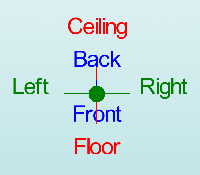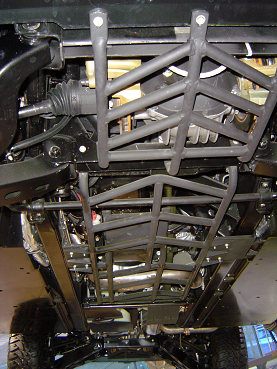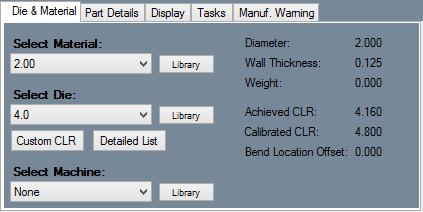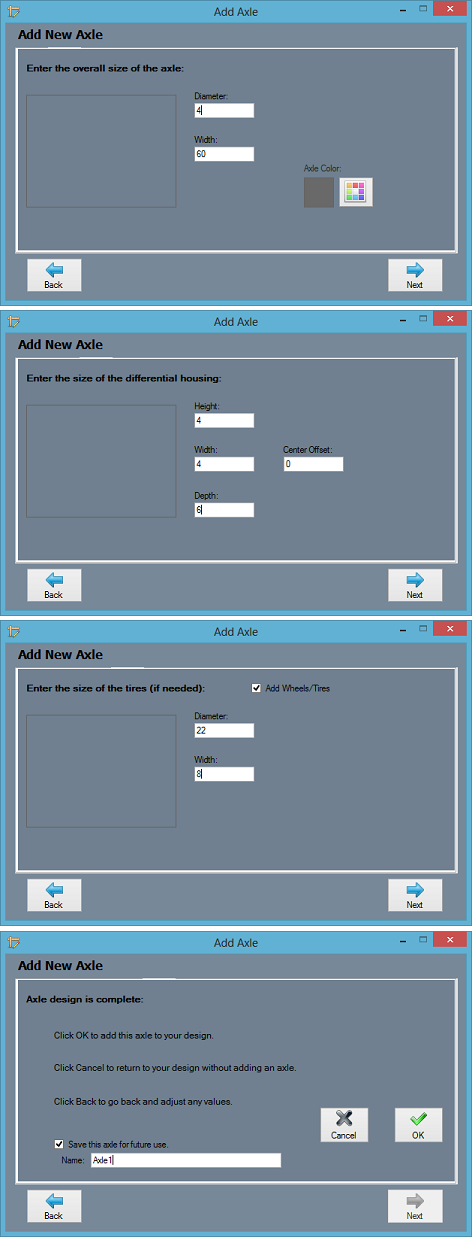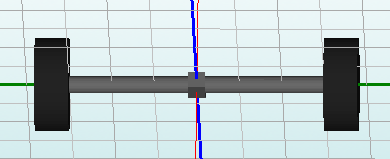Exhaust Tutorial II
This tutorial is designed to walk the user through the steps in making an exhaust system out of bent parts in the Exhaust interface. For initial and secondary assistance on the Exhaust interface, see Exhaust Design and Exhaust Tutorial
Things To Know
- This tutorial is designed to walk the user through creating an exhaust system in the Exhaust Design interface. As you go through this tutorial, later procedures will assume that you understand all earlier procedures. Because of this, it is very important that you carefully step through this guide, understanding everything along the way and following all steps in order.
- A few key items need to be addressed before starting the step-by-step instructions of this tutorial. It is very important for Bend-Tech users to completely understand these items:
- 1) Center Line & Apex
-
- Center Line: In the Exhaust Design environment we are working exclusively with the center-line of a part, as compared to the inside or outside.
- 2) Locational Orientation
-
- Designing in the Exhaust Design interface seems to work the best if users imagine they are standing underneath the vehicle at a 45 degree angle, looking upwards. This way left is left and right is right. Take a minute and examine the Tri-Star to get your orientation.
- Notice how the truck in the picture is setup with the same orientation.
- 3) Defining Parts
-
- It is possible to create parts in the template and custom part interfaces, however, starting out this way tends to get confusing for new users of the software. It appears that there is a higher level of success with customers who start out designing parts directly in the assembly interface.
Start Up
1) Start by double clicking the "Bend-Tech 7x" icon to start up the program.2) Select the "Exhaust" icon ![]() in the Task Menu under the "Create New" section to open the Exhaust interface. The window that opens should be labeled [Exhaust Design – 1].
in the Task Menu under the "Create New" section to open the Exhaust interface. The window that opens should be labeled [Exhaust Design – 1].
3) For the purposes of this tutorial, click the "Maximize" button ![]() at the top right of the Exhaust Design window.
at the top right of the Exhaust Design window.
4) For the purposes of this tutorial. The "Die & Material" tab is located in the upper left corner of the window. Select the "2.00 Material" and "4.0 Die" as seen here.
Changing the "Grid Spacing"
1. Start by selecting the "Spacing:" value field and changing the value to "6".
- This will give the user more control and accuracy when creating their lengths of pipes in the display area.
2. Also, select the "Width:" value field and change the number to "240" to make our grid a complete square.
Creating an Axle
1. Select the "Axle" ![]() button and the "Add Axle" window will open.
button and the "Add Axle" window will open.
3. Type "4" in the "Diameter:" value field to set the axle diameter to 4 inches.
4. Type "60" in the "Width:" value field to set the distance from the axle's end to end.
6. Type "4" in the "Height:" value field, "4" in the "Width:" value field, and "6" in the "Depth:" field to create the differential housing.
8. Select the check box that indicates that you'd like to add tires, type "22" in the "Diameter:" value field and "8" in the "Width:" value field to create tires on the axle.
10. Save the part as "Axle1" and select the "OK" ![]() button to finish the part.
button to finish the part.
